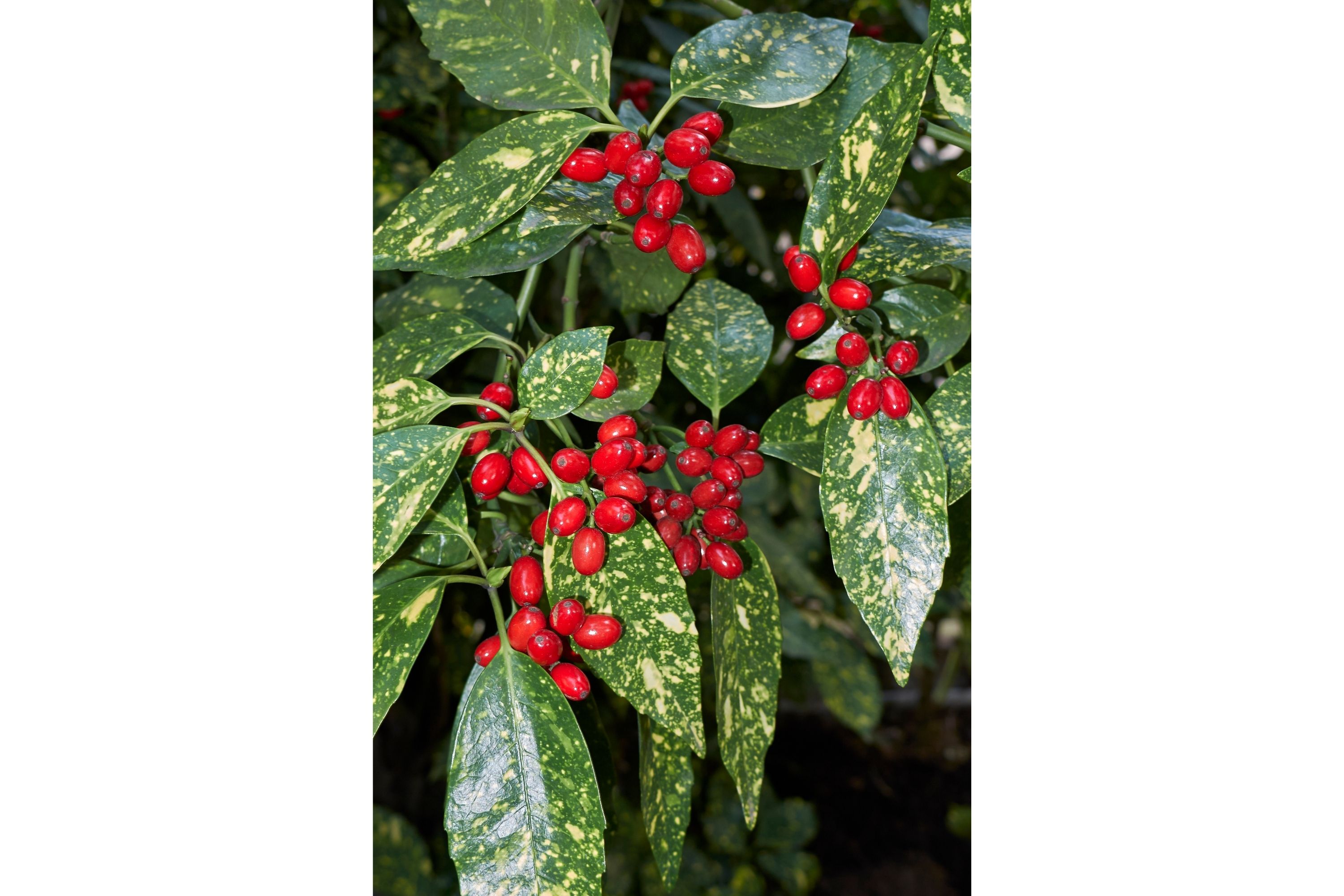Japanese Laurel
(Aucuba japonica)

Description
Aucuba japonica is a popular ornamental plant that is native to eastern Asia, specifically Japan, Korea, and China. It is commonly known as the Japanese Aucuba or Gold Dust Plant. It is highly valued for its attractive foliage, which is variegated with yellow or gold speckles. The plant is evergreen, which means that it retains its leaves all year round. In this article, we will explore Aucuba japonica in more detail, including its origin, characteristics, care, and uses. Origin and Distribution Aucuba japonica belongs to the family Garryaceae and is native to eastern Asia. It is believed to have originated in Japan, but it is also found in Korea and China. It was first introduced to Europe in the early 1700s and has since become a popular ornamental plant in many parts of the world. Aucuba japonica is hardy in USDA Zones 7-10, which means that it can survive in areas with temperatures ranging from 0 to 40 degrees Fahrenheit. Characteristics Aucuba japonica is an evergreen shrub that can grow up to 10 feet tall and 8 feet wide. It has large, glossy leaves that are 3-8 inches long and 2-4 inches wide. The leaves are leathery and have a distinct texture. The plant is dioecious, which means that it has separate male and female plants. The male plants produce small, inconspicuous flowers that are followed by clusters of small, bright red berries. The female plants do not produce flowers but instead produce clusters of berries that are bright red and up to 0.5 inches in diameter. The berries are toxic to humans and animals, so it is important to keep them out of reach. Care Aucuba japonica is relatively easy to care for, making it a popular choice for home gardeners. It prefers partial to full shade and moist, well-drained soil. It can tolerate a range of soil types, including sand, loam, and clay. The plant is drought tolerant once established, but it will benefit from regular watering during hot, dry spells. Aucuba japonica does not require pruning, but it can be pruned to maintain its shape or to remove any dead or damaged branches. Propagation Aucuba japonica can be propagated by seed, cuttings, or division. The easiest method is to take stem cuttings in the spring or early summer. Cuttings should be taken from new growth and should be 4-6 inches long. Remove the lower leaves and dip the cut end in rooting hormone before planting in a pot filled with moist potting soil. Place the pot in a warm, bright location, and keep the soil moist. The cuttings should root in 4-6 weeks. Uses Aucuba japonica is a popular ornamental plant that is used in many different settings. It is often planted as a specimen plant or in groups as a hedge or screen. It is also commonly used in shade gardens or as a container plant. Aucuba japonica is often used in Japanese-style gardens, where it is valued for its attractive foliage and bright red berries. In addition to its ornamental uses, Aucuba japonica has also been used in traditional medicine to treat a variety of ailments, including rheumatism, fever, and headache. Conclusion Aucuba japonica is a beautiful and versatile plant that is well-suited to many different settings. It is valued for its attractive foliage, bright red berries, and easy care requirements. Whether you are looking for a specimen plant, a hedge, or a container plant, Aucuba japonica is an excellent choice.
Taxonomic tree:







